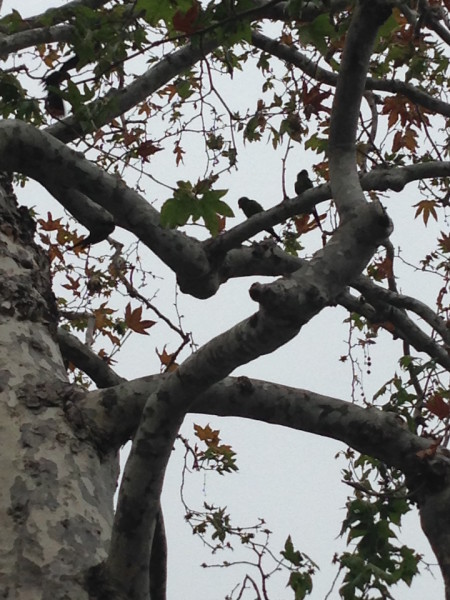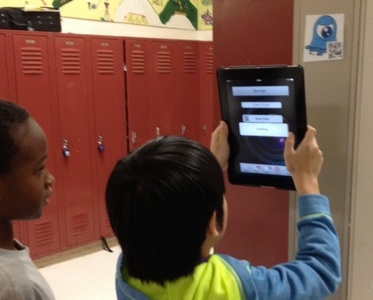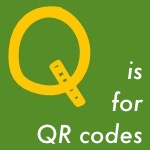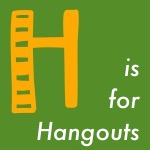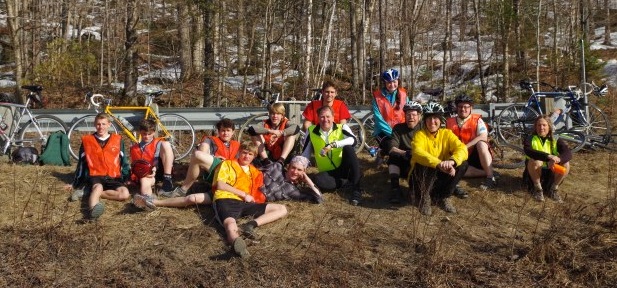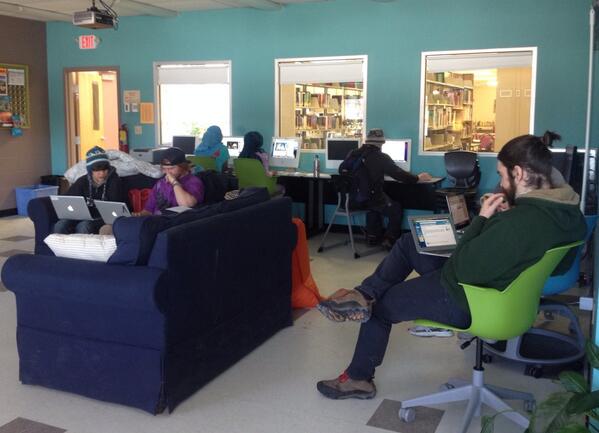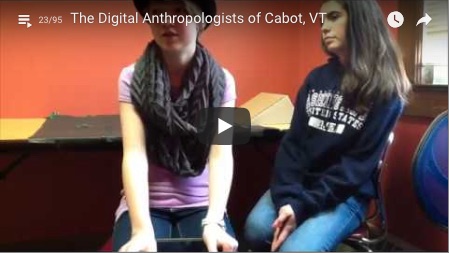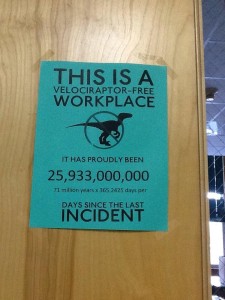with Katy Farber
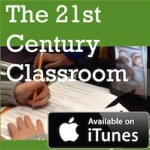 From real and relevant to what to do in the event of a mountain bike accident, the last predators in Middlesex, and the all-important question of who is responsible for the pizza at your exhibition of learning. That’s right: librarian Jeanie Phillips talks all about service learning with author and educator Katy Farber.
From real and relevant to what to do in the event of a mountain bike accident, the last predators in Middlesex, and the all-important question of who is responsible for the pizza at your exhibition of learning. That’s right: librarian Jeanie Phillips talks all about service learning with author and educator Katy Farber.
A full transcript appears below.
Jeanie Phillips: I’m Jeanie Philips, and welcome to the 21st Century Classroom. We’re here to talk books for educators, by educators, and with educators. Today, I’m here with Katy Farber.
Thanks for joining me Katy. Will you tell me a little bit about who you are and what you do?
Katy Farber: Hi, I’m excited to be here. I’m Katy Farber, I was a sixth-grade teacher for the past 17 years or so. Three years ago, I joined the Tarrant Institute as a professional development coordinator where I’ve had great opportunities to research, to write, to think, and to collaborate about how to make school engaging.
Jeanie: Great. I’m so glad you’re here to talk about this book. I really enjoyed it. I wish I had read it last year before I helped a team of teachers co-plan a service learning unit.
https://twitter.com/JPhillipsVT/status/1009389131846254592
I’m just going to start with your definition of service learning. You laid it out really clearly in the book and I wondered if you could just tell us what you think service learning is.
Katy: Absolutely. I really liked the KIDS Consortium definition of service learning which has students discovering the assets first, I would add. But the needs of their own community and then doing research about those needs. Then coming up with an action plan of how they can improve a condition and make a real difference in their communities. Reflecting along the way and then sharing their process out at the end.
Jeanie: Could you talk more about what you mean by asset planning?
Katy: Yes. In fact, when I first started the service learning work many, many years ago, I used this resource and it guided me to discover the needs and problems in the community. But then a couple of years ago I started to think about — and learn about — an assets-based approach.
How can we go into communities as students or as teachers without really first looking at and learning from, the strengths in that community? And diving in, and getting to know people that live there? What makes the place they live special?
Only then I feel, can teachers and students really explore what are the needs and the problems.
Jeanie: That just makes me think about how you’re asking students and teachers to go into the community with the same lens we as educators use with students. That we’re not fixing them. We’re not saving them. That we’re really seeing where their strengths are? And helping them build skills where they have challenges.
Katy: Yes. I just went to AMLE in Florida and took teachers through an asset mapping process. It was very short, but you could replicate it in the classroom in a much more deliberate and intentional fashion. It seemed to set us up nicely to brainstorm about the assets of the community. Then brainstorm about the potential need.
Then look at the UN Global Goals. Try to prioritize needs based on those Goals, and then think of projects from there. Because then you’re grounding students in what is special and important in their communities and what they want to improve on.
Not solve but improve on.
Jeanie: Do you have an example of a school that’s done this kind of asset mapping that you could just briefly describe the process?
Katy: Yes. Thinking about Burke Town School, they have these amazing “Kingdom Trails”, these mountain bike trails — that’s the asset. This amazing outdoor opportunity that they have for residents and people that travel to this site to go mountain biking.
But people get injured out there. And they noticed a need for people in the surrounding area to have wilderness first responder skills. So they learned from a local professor that works in that field what they should know. What are the really important things to know if you come upon somebody that’s injured on the trail and how you can better help them. Then they went out and taught the community about that.
They used the asset. They found the problem that was existing within that and then developed a plan to make things safer in their community.
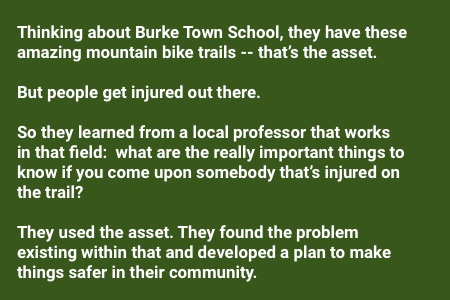
Jeanie: Wow, that’s such an authentic learning. It’s such an authentic problem, such an authentic learning. Also, a really authentic audience. I’m grateful for that. My son is a mountain biker and loves the Kingdom Trails, so I’m grateful to them for that.
We’ve talked about what service learning is. In your book, you also go through project-based learning, what it is.
You go through this process that I really appreciate of Venn diagraming the two, where they have overlaps and where they’re distinctly different.
Do you want to talk through that a little bit?
Katy: Yes. I think, as educators, we get really stuck on what box we’re operating in. I think, when you think about personalized pedagogies that it’s really great, fine and encouraging actually to dance between two, three, or four approaches as long as some of the commonalities exits.
Such as:
- Are we creating something that is going to be beyond the audience of one, for the teacher?
- Are we doing something that kids feel that they have voice choice, and creativity and that matters?
Those are some of the commonalities between them.
Project-based learning has a little bit more of structure in terms of entry events and the way that maybe things are labeled? Service learning seems more process oriented in terms of coming at and looking at: what are you going to improve and what are you going to do about it. But that is certainly not meant to be siloing, right?
The real difference that I can see with project-based learning and service learning is that project-based learning can be a simulation.
It can be this court case that you’re acting out. Or it can be a mock election. You can still have excitement relevance engagement.
But service learning is tied toward action in the community, right? And that action is not decided upon by the adults. That’s community service, right? That’s another misunderstanding I see a lot, is that community service is usually detached from the curriculum. It’s usually adult-decided.
The example I like to use to think about that is telling kids they are going to pull tires out of the river. The kids don’t even know that the tires in the river are a problem. They just go do the thing. It’s important. They make a difference, but they’re not seeing the connections for themselves and they’re not coming up with the plan themselves either.
Jeanie: What I hear you saying is that part of the authenticity of service learning is that kids identify the problem and the solution.
Katy: Yes. Yes. And that you can teach specific proficiencies or standards or transferable skills through that process.
Jeanie: I have real, genuine curiosity about this as I work with schools. Sometimes I hear teachers who want to do service learning describe community service. And they really want to use it to, let’s say, meet some science standards or do something around sustainability.
So they’re like,
“Well what I really hope that the kids will do is plant a school garden.”
I’ll say,
“Well you can narrow the scope so it’s science-focused for service learning.”
But, telling them what they’re going to accomplish at the end automatically makes it not service learning. Am I correct when I say that?
Katy: I think so. I think that you can have a real guided process with helping them discover the problem for themselves. And that I think is where the work is. Especially if you’re coming at it with something that you have a sense of what you’d like them to discover? And the approach you’d like them to take. Your process could be guiding them towards that.
One project that I did with the sixth graders was about the Worcester mountain watershed, and so that’s pretty specific. I had pretty specific things I wanted them to learn about the ecosystem there. We started with that focus and then asked them to brainstorm every question they could possibly think of about that ecosystem. It’s very wide, and then group them based on all sorts of different science concepts that emerged.
Then, they’re all learning from each other. They’re learning whatever it is in terms of erosion in our particular ecosystem. Or they’re learning about the riparian zone or they’re learning about a particular mammal.
It’s also that co-learning experience where I can cover a lot more in terms of proficiencies or standards that the students are also teaching each other. And pursuing something of their interest within a certain theme or subject area.
Jeanie: If you narrow the subject area, if your driving question focuses them in a specific subject area… it’s really the solutions that are up to them, then.
Katy: Yeah. It’s where are you finding the voice, choice and creativity. You have to think about is as, sometimes we have to apply specific constraints. And then look for the places where we can get the creativity and the choice. Then, that’s up to us to find that balance.
It’s going to be different class to class… year to year, project to project. It’s not like we can just do the same service learning project every year, right? Because the needs of the community are going to be different. The students that are coming to us are going to have different needs and different ideas.
And so it’s really… even with the same theme. Even if you did the same theme certain of your projects would turn out differently. If we’re tuning the choice and constraints and really thinking carefully about that.
Jeanie: So the constraints might be: we’re focusing on this watershed?
Katy: Yes, exactly.
Jeanie: What I love about that is often students come up with way better ideas for the solution. Or for the push to improve a place than we would as adults. They’re way more imaginative in their thinking.
Katy: Absolutely.
Jeanie: Have you seen that in practice?
Katy: I have. Just the ideas for projects that they come up with are so much wider in scope than I ever anticipate. It’s really exciting to see. Within one culminating event that we had at Rumney School there were all sorts of different things.
There was a play about the last predators in Middlesex. A play featuring the food web that I would never have anticipated from students — who I would never have anticipated would have done that. There was a field guide for the amphibians that was describing the marsh that was a resource. That was just off the playground that nobody even knew. They just didn’t even know that was a habitat.
So there’s just such a wide variety that emerge. And that really do add assets and make connections for students to where they live.
Jeanie: That also seems to get me. Get past this idea of strategic compliance where you’re complying with this project I want you to complete. To the work we really need kids to do in order to be good citizens in this world, which is imaginative, creative problem solving.
Katy: The other thing I think that really is an interesting point between service learning and project-based learning is that — in my view — they both should be process-oriented and student learning oriented.
Versus a pretty little project that we’re excited to share at the end from the adult lens.
I think that we can get really caught up in what we think it should look like. And forget that it’s really their learning journey along the way that matters more than anything.
Jeanie: Absolutely. I love that. I feel like we’ve already gotten into this, but a question I had written down that I want some more answers here, that I want you to really think out loud about is, why service learning?
Why should schools invest the time in service learning?
I think you do a nice job of answering it in your book. Could you give us a few highlights?
Katy: Well, what I’ve been reading and thinking about lately is: we know that students who are deeply engaged in meaningful work learn more. Achieve more. Come to school more often. Graduate on time more often, have better social skills and better feelings of interconnections between their peers and their teachers.
This is really an important work. I think that we can fall into those sort of content-covering traps. But really, what are we asking students to do? To learn how to become engaged citizens that can help improve the communities where they live in the future and currently. They’re such an undervalued resource in terms of compassion and knowledgeable, caring people who can really be co-creators of a strong community. If we don’t give them those opportunities, what are we saying? We’re saying that you’re not ready contribute. Then we’re just going to all of a sudden ask them to vote? And ask them to become members [of society] when we deem that they’re ready for that? I just feel like if we’re not preparing students for this kind of engagement, that that can really have a detrimental effect on our society, right?
Let’s not forget about all the skills that they’re going to be learning along the way and the social capital that they learned. What I mean by that is, we’ll see students who, maybe they’re really isolated. They don’t know what career paths could possibly be in front of them. And then they go ahead and maybe they’re part of — there’s an invasive species group in a school that I work in. They end up coordinating with all these different community groups. They see what adult pathways could look like for helping your community and having a job that pays your bills.
And they didn’t know that existed before. Then they met that person. They now have a relationship. They have the social capital. Whereas, if they were isolated and they didn’t have that before, they had no concept of it. We’re giving students all sorts of future pathways, career pathways, skills that they can use beyond school. And showing them that they matter in that landscape.
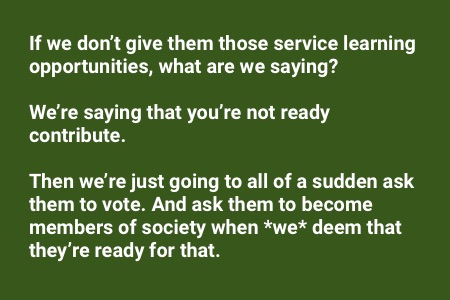
Jeanie: It seems to me like it’s a really rich opportunity for the three pillars of Act 77. It’s a really flexible learning environment, where kids have lots of voice and choice. It may be outside of their regular school setting. It’s proficiency-based, right?
You have to use transferable skills in order to do service learning well. In order to do service learning well you have to be proficient at those skills, right? You have to be able to collaborate well or communicate well. Plus you have to be able to problem-solve. And to demonstrate that. To collect evidence of it, in order to do the service that you want to do. It feels really personalized. Like kids gets to choose their path.
It feels like the perfect tool for this moment.
Katy: I think it is. Just the basic skills of:
- how to use the phone;
- how to make a contact;
- and how to write a professional letter.
These are things that kids have to practice and know how to do. And we have the responsibility within the service learning or project-based learning context to do the direct teaching and support to get them there. Think of the idea that, oh, they’re working on their projects, they’re independent. But really, it’s our time to get personal and close in with: what does a student need? And how can we help them get there? Within this project context.
Jeanie: It also feels like it pushes that lever that I’ve found to be really useful in motivating students, which is authenticity or relevance.
It’s something that matters to them in their community. It’s something that feels like they’re doing really authentic work.
This is not worksheet work.
Katy: No. In fact, one of the things I think that illustrates that really well is, I had student who as a sixth grader really didn’t like coming to school and didn’t really find success or meaning in the regular academic context.
But when he was partnered with a second grade student at recess, helping that student play safely? And helping all of the primary kids be safe on the playground? Those relationships blossomed. Then when he would walk by them in the hallway, they would high-five him. They would hug him. And so he started to come to school more. Especially on the days when he was doing that work.
It was such a clear example to me of: this matters. He feels like he belongs here. I would like to see a world where every student feels like the school won’t function properly if they are not there.
Jeanie: Yeah. You’re bringing me back to my last two podcasts. The first podcast we did was on The Culture Code. We talked about it with Bill Rich. An important theme of that book is belonging. What you’re saying is that service learning really builds belonging for students. That they feel necessary to their communities. Their school community or their broader community.
Katy: That’s right. That they feel critically important and that they’re learning with and from each other. I think that was a really important finding and learning for me. We can reinforce existing stereotypes if we think “we’re doing this service for you”.
It’s not doing the service for you. It is: we are learning together. We are with and improving our communities. In fact, if it’s done in that reciprocal way, then service learning has the power to disrupt stereotypes and biases. The research supports this.
You have fourth graders that go out and have pre-existing ideas of what elderly people are like. And then you have them do a service learning experience with those same folks, elderly people, and they disrupt the biases that they had about them beforehand.
The same goes for pre-service teachers working in high poverty schools.
It’s really powerful in terms as a tool to disrupt what you notice as maybe a privilege or a bias or a stereotype.
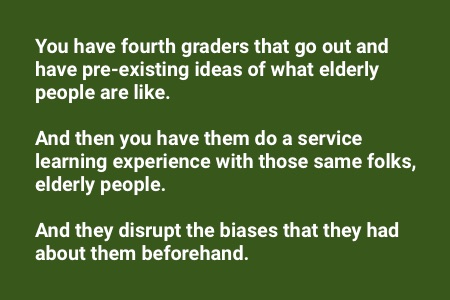
Jeanie: It seems to me it’s also an opportunity to disrupt adults’ views of what kids are like. This brings me to the other podcast. My second podcast with Jory Hearst where we talked about Piecing Me Together. In that book Jade is the main character. And what she wants more than anything, is to go on this community service trip to South America to use her Spanish. To have impact, to be able to give.
What she gets instead? Is a mentor. She feels like, wait, how come I only get to get? How come I’m not seen as somebody who can give? I feel like you’re touching on that theme too, that’s it’s empowering to know that we have something to offer. That we know we have something to give to our communities.
Katy: Absolutely, and what an undervalued resource, right? It also really does change the way the adults think about the kids. Because, here you have community partners that are coming in and their biases about teenagers. They come in with certain ideas that they have and those are disrupted by what are kids able to do and bring to the table.
We do really have all sorts of reciprocal benefits for all the community that get to engage with these kids. Then for the kids that get to see their communities in a new light and themselves as a change agent within it.
Could you talk a little bit more about community partners?
Could you maybe guide schools through how they might discover the community partners that could be their allies in this work?
Katy: One thing that was really important for me as a new teacher in a school was to figure out who my community gurus were. Who were the people that had that knowledge of what exists in the community? Who are the people that know the people that can connect me to that?
That was really important for me to discover who those folks were. That was through a whole bunch of parent connections and connections to the administrative assistant, and connections with the custodian. But really, who are your people that know what’s happening in the community and they know what experts you can reach-out to.
We would survey the parents. We would survey community members. And we would ask all sorts of questions about what are the areas that you’re interested in? What are the areas you could possibly come in to school and talk to kids about? Would you be interested in having them onto your site or where your organization is located, or would you be willing to come to the school?
There were all sorts of opportunities for that knowledge to grow. And it only increases, right? Once you start building that, people know that you want to know about that and that you start accumulating all the information about that particular community and what’s available outside the walls of the school.
Jeanie: It seems to me that in my experience in schools, a lot of that information is in one person’s head.
Just as a tech solution, where do you put all that?
Katy: It’s a great question. It’s interesting to think about when I did this it was much more analog oriented and we were just starting to use those connectivity tools. I feel like now there’s so much more opportunity for connecting globally. And really unsiloing ourselves from all these really separated places.
But now I would think about things like a shared Padlet or Google Classroom. Or I would think about creating Google Sites or shared drives. Places where, if the person did leave, they could leave that legacy of what are the assets, what are the needs? Who are the partners that we can work with? It changes all the time. Who comes in, who’s willing to work with kids?
We did a community launch in Burke, where we partnered with 12 different organizations that came into one of the buildings there, the gym, and set up stations. Then the kids went around and interviewed them. That whole structure exists and all those partners contact information exists at Burke Town School for example. But then they’re changing their approach a little bit this year and reaching out in a different way. You’re right, it’s: how do we hold that institutional knowledge and how do we transfer it every year.
Jeanie: I’m going to switch tacks a little bit. One of the areas that I found both in project-based learning and in service learning when I work with schools that’s a challenge for people is reflection.
I wonder what Katy Farber’s, like in your back pocket, reflection strategies are with students as they’re doing this important work?
Katy: When I was researching service learning I kept coming across information and research that was supporting how reflection really is the learning in service learning and that it’s so easy as a teacher to just really focus on the doing. Everybody loves the doing. Students, teachers, it’s all very exciting.
We have to slow down, we have to think about what we’re doing, talk about what we’re doing and reflect about what we’re doing. It’s just critical to the success and the learning of in service learning and project-based learning.
I tend to be somebody who is excitable and rushes. I would need to really earmark the time in my teaching schedule for that reflection. It’s easy to get stuck in a pattern of “just journal about what you did today”. And that is great, that there is reflection happening. I think about ways to expand that. With great video tools right now like Flipgrid, with sketchnoting, with mind-mapping. With all sorts of other ways to get students thinking about what they’re learning.
Right now I have a reflection menu that I use and it lists a whole bunch of different ideas. Some very tech-oriented and some just pencil, paper-oriented. Just to guide kids. Then I would give them choice about how they are going to go ahead and reflect.
If they stay in one form of reflection, then I would encourage them to try another one, another avenue and really try to create a body of reflection at the end of the project that reflects all sorts of modalities so that they know that they’re also learning about how to do reflection as well.
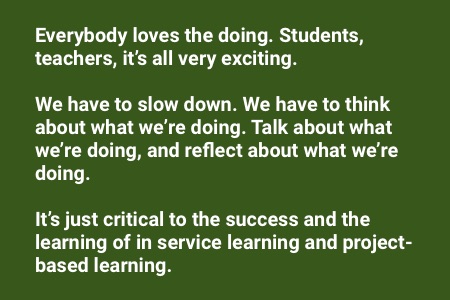
Jeanie: Yes. I’m really fond of metaphors. One metaphor I found works really well with middle school students is to ask them,
“If the work we did today was a traffic sign, what would it be and why?”
I’ve gotten some really juicy answers out of that and really thoughtful responses.
Katy: That’s really neat. That’s also back to those constraints, right? It’s so broad to say, “What did you learn today?” That might be a nice way to get a little bit more focused on different aspects that you want to really draw the kids’ attention to. Maybe you’re working on a specific transferable skill, so you say,
“How did I practice communication this week? What was hard? What am I going to try next week?“
It’s not only a tool of reflection, but it’s also a tool of planning and focusing for the next session.
Jeanie: Right. When we do collaborative work, sometimes… I’ve been working with teachers around using a collaborative pie.
- How big was your slice of the work pie?
- How big were your peers’ slice of the work pie?
- Could you reflect on why that was and how the work went because of that?
Jeanie: Katy, in your book, you outlined some key findings from a case study you did on a specific service learning project.
Could you share some of those with us?
Katy: Absolutely. The quote that I’m just going to share with you that I think really encapsulate a lot of the work that was happening at this particular site is this one from Brené Brown.
“We move what we are learning from our heads to our hearts through our hands.”
The findings of this particular site, which was a middle school, and it was a sustainability course that the students were involved in. That students were doing throughout the course and they were engaged completely. They didn’t sit for more than maybe seven or eight minutes during class time. They were building their competency, their ability to actually do things, that often surprised themselves.
They’re constantly problem-solving. So if the fence broke to the chicken coop, or there was a leak, or there was any need, the teacher would not solve that problem for them, but would ask how they are going to solve the problem.
Students regularly showed caring to each other, but also to the chickens or for the tower garden or for whatever needed care.
They really showed that regularly.
They had a personal connection and a strong relationship with the teacher.
The learning environment had a joyful, fun spirit to it. It’s often undervalued. A lot of our student environments are very stressful. But music was playing and it seemed like an accepting, safe place for learning and for exploration.
Students felt pride. They felt good about contributing to the sustainability of the school and the community. That their contributions mattered. That what they were doing had significant impacts. And there were very few behavioral problems in these classes that I observed.
Jeanie: I love that. One of your chapters is called “Doing Matters.” It reminded me of when I interviewed students from Leland and Gray after their service learning project. That one of the key things that many of them said was, “It was really nice to be doing something and not just sitting in a classroom.” For them that doing really did matter.
Katy: It does. It has the ability to change their perception of learning. Because they only think of learning in this one way. They’ve been doing learning, doing school in a certain way. This can really change their perceptions of what they can do and how they can learn.
Jeanie: Right, love it. One of the things that I think teachers especially struggle with when we do project-based learning, but especially service learning is that rarely does it happen with just one kid working on something. It happens in teams or groups.
Working in collaborative teams is really challenging.
There’s a lot of learning that students and teachers have to do, to do that well.
Katy: Yes. I actually remember when I first learned about Tuckman’s team development model. It was after school and I’d been trying service learning and kind of feeling like it was a little unwieldy.
And I remember being taught through the KIDS Consortium training in service learning about the phases of teamwork. Or the phases that teams go through as they are trying to do important things. I remember the relief I felt when I learned that “storming” is a phase that teams go though, and it’s okay. It looks like power and control issues. It looks like difficulty communicating. And it looks like trying to figure out how we’re going to function as a team.
Adults go through that and students go through that. And, somehow that just normalized that for me and gave me the relief and understanding that I can help students move through that storming phase.
The phases that are in the book are:
- when the group is forming;
- when they’re storming;
- again when they’re norming;
- and then when they’re performing.
Certainly, this is not linear. Teams can move back and forth between all these phases. But something about teaching that to students and teachers, to learn that this okay, this is a different kind of learning. It won’t fit into a tidy, quiet box. It’s going to be a little bit challenging for everybody, but that just means that there’s more buy- in and that there’s more participation, hopefully.
Jeanie: I love this. Because what you’re saying to me is that in the life cycle of a team, there’s going to be trouble.
That that’s normal.
It reminds me both of being a mother, when my son was in early adolescence and would get a little surly. Instead of being annoyed with him, I’d be like,
“Oh, he’s completely in the right developmental stage! If he wasn’t doing this, it might be something to worry about.”
Or, when I work with middle school students, it’s to be accepted. Because it’s the natural developmental arc. You’re describing the developmental arc of teaming as sometimes there will be troubled waters. There are going to be periods where there’s a fight for power, or where kids are butting heads against each other. If we help them work through that, they are going to be more productive than if we shut that down before it even gets started.
Katy: What a powerful learning opportunity, too. One of the things that it’s just good to keep in mind as a teacher is,
“I’m not going to go fix it for you. How can this team be productive? And having that be a joined space of problem-solving?”
Jeanie: Right. I heard Courtney Martin say on a podcast one time, “I’ve become suspicious of efficiency.”
It makes me think that sometimes we’re so wrapped up in efficiency that we forget that some of our deepest learning happens in these inefficient, messy ways. Teamwork is one of those places That’s not always efficient, that’s a little bit messy, and yet we learn so much about ourselves and others and how to work together.
Katy: It also reminds me of the book Duct Tape Parenting. I don’t know if you have read that one, but I have listened to the author speak before. She talks about waaaaaiting when you’re hearing your kids maybe argue with each other. Waaaaiting if they’re not actually punching each other. Can they solve this themselves? Because then they’ll have the skills to do that. As a teacher, I would have to count to myself. I would have to fight that urge to go rescue them from the wrangling. The wrangling was often right before they had a breakthrough.
Jeanie: Right. We rob our students of the opportunity to do that deep learning when we rescue them.
Awesome.
Any other words about teaming and working in collaborative teams?
Katy: Just that we have to use our best teacher moves. Sometimes that might be that kids have clear roles that are delineated, explained and modeled. That might be the learning that they need to increase their self-direction and their skills to be able to do this work. That might be what it is. You might be allowing more freedom as they get more experience with this. It doesn’t mean that we just,
“Go ahead in the group. You’re going to storm and you’ll figure it out.”
It might mean that we need to give them more clear parameters, if they need that. You’ll know from your students how you want to start that work. And then maybe move to more freedom as they gain skills to do that.
Jeanie: Right. What other teacher moves do you find most useful when you’re doing service learning work with students?
Katy: I think it is the best opportunity to engage students just-in-time with whatever they are working on. Meaning like I might not care about using commas appropriately, or any number of skills that I might not have — until I need it for my project that I care passionately about.
And so if I can align that just what you need, right when you’re asking for it and you need it? Then I’m in that sweet spot of teaching. I can use all my best direct instruction skills, modeling skills, scaffolding. All of those things right when the student is the most receptive for it.
Jeanie: I’m going to move on and ask you to unpack an example for us that I know you’ve been involved in. Last week I had the great pleasure to present with students and a teacher from Cabot, the Cabot School, at the Rowland Conference at the University of Vermont in Burlington. And we were presenting on student agency and engagement. These two students and a teacher from Cabot School were presenting about their work with Cabot Leads. I’d love for you to give us a little summary about Cabot Leads as a service learning project.
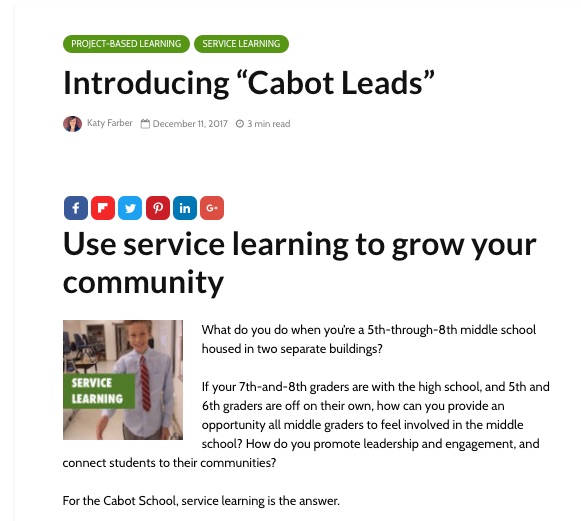
Katy: Yes. Cabot is in this really interesting situation where they have a 7-12 building. Then they have the K-6 buildings, they’re separate buildings and they’re spread out over this campus. What was happening was that they want to view themselves as a middle school, as a 5-8. But since the buildings are separate, it’s really very difficult to build that belonging, that community, that sense of purpose.
We wanted to come up with something that would allow all students to engage in leadership and service and to feel critical to the running of the school in a meaningful way. I had done something like this in sixth grade at Rumney School where students had done jobs. These jobs were either identified by what the student was interested in or what they saw as a need in the school community. Or it was identified by the school community saying, “Hey, we have all these efforts going. It’s too much. We really need the support of the students here.“
Really, it’s this intersection of what does the school community need and what are the student’s interests?
I had done that at a classroom level and then we took it middle school-wide with Cabot Leads.
People from across that Cabot community identified needs within the community. Students did a set of interest inventories, discovered what they were passionate about helping with. Then they applied for different jobs key in helping the school function. Things like culinary assistant, public relations committee, library assistant, math tutor.
Things where they can go in and once a week usually — but sometimes more — help with functioning of the school toward positive outcomes. That’s a 5-8 program. What are we doing there? We’re building all sorts of cross-age relationships. We’re building all sorts of narratives of opportunity and career pathways. And then just so much belonging between that.
As they gain more skills, they can gain more independence with each new job. So they can reflect on the job they did last year and the job that they want to do in the upcoming year. They have to interview for the job. Then the mentors get together and they decide those different placements based on what students need, what they’re interested in and what would support the community.
Jeanie: Such real world skills, right? Not only do they have to interview, they have to apply.
They have to build a resumé and write a cover letter, am I right?
Katy: Yes. They do. Even just the learning of that procedure. Think about that. Why do we wait until kids are in college to engage in that, or post-secondary, anything? Why do we wait to have those kind of conversations? Shouldn’t we get to know what are your strength now? What do you want to learn? What do you want to do?
And I just did interviews of kids last week for this job. You could just see, they did a virtual interview with me. So not only they’re gaining the skills on doing a virtual interview and connecting to what are my strengths? What can I bring to this position? How might I impact the community? These are deep questions that kids are asking in middle school in Cabot.
Jeanie: I heard from one of the students that there’s a new job this year. That got me really excited. Do you want to talk about that new job that they were offering this year?
Katy: Are you talking about the adviser to the principal?
Jeanie: Yes.
Katy: Yes, that was so exciting! That is just wonderful. Glenda Cresto, the principal there — I’m not exactly sure how this job was born. I’d love to trace that back to its origin, but I just loved that the student can partner with the principal in all the school improvement efforts. That’s just a really exciting development.
Jeanie: Has that job been filled?
Katy: It has been applied for.
Jeanie: Excellent.
Katy: Yes. There are several different new positions there this year.
Let’s see, there’s the concession stand assistant who helps run that space, and so that’s to support the community and to raise money for the school. There’s all sorts of applied math that they can come from that. That’s just really exciting too.
Jeanie: Yeah. I love that program. I love talking to the students and hearing about their growth. And I love the way they celebrate their learning with a gallery at the end.
Katy: Actually, I’m really glad you said that, because that’s the thing I did forget to say. Is that there is a Cabot Leads culminating event sharing. Which was so neat. I attended last year. The students from the culinary committee and assistants, they were making pizza in the pizza oven outside to feed everybody that was coming to take in all of the exhibits that were on display.
Jeanie: I love it. Let’s talk a little bit about the books that really informed your learning around service learning and that you might suggest other educators read or revisit as they’re doing this important work.
Katy: It’s a really interesting cross-section. Right, place based learning, service learning and project-based learning. I think it’s fine to dance between those and to really get to know how you want to incorporate some of those similarities between those approaches.
KIDS Consortium has a website and several books that I really do like, as does the Buck Institute, Setting the Standard for Project-Based Learning. That’s a really incredible guide filled with research and resources on project-based learning. I feel like those two are really solid grounding in both pedagogies. I think I would start there.
Jeanie: Here is my own special interest: when I was reading your book, I was thinking where does this show up in young adult, middle grades or children’s literature?
The example that came to me of kids solving a problem, an authentic problem that they had was, Harry Potter. Specifically, I think the Harry Potter and the Order of the Phoenix, where the fourth or fifth year to road, they have a completely crummy Defense Against the Dark Arts teacher. Now, it’s Dolores Umbridge and she has them learning about the dark arts by doing worksheets essentially, and so they formed Dumbledore’s army. Their way of solving a problem, they have to be prepared for what’s coming, and so, they practiced together.
But I had a hard time really thinking of service learning in action in books. I’m wondering what sparks service learning for you?
Katy: I come at the work from an environmental lens. A lot of my entry into service learning was around environmental issues that I would learn about. And then bring forth to students. We had sustainability standards in one year. I focused very locally one year for a service learning project and then try to be more global the following year.
One year I just spread out a tarp in the classroom, I just took the trash and I just dumped it out in the middle of the classroom. And it smelled! There was lots of draaaaama. But we discovered some really basic things. Like kids were getting bagels for snack time and they were throwing their foil into the trash. There was a ton of foil in there.
That was a problem we wouldn’t have really known if we wouldn’t have been reading nonfiction about environmental issues and problems and really thinking about that. Like Hoot — any Carl Hiaasen book. Or The Long Walk to Water. You think about that book that is just coming back to where different people have to spend hours and hours to find access to their water.
- What are the issues that you’re seeing in your literacy program?
- What are the things that make your kids feel very excited and that feels like it has possibility in local, or even global connections?
I’m trying to remember the book that we were reading when students understood for the first time that girls across the globe did not have access to education. This was a startling realization for them. We were on a hike up Mount Hunger on a field trip. They were like, “Miss Farber, can we do something about this?” Yes, we can.
Jeanie: Yes, we can.
Katy: We ended up crowdsourcing all sorts of books from the parents and then having a large book sale. We ended up sending the money from that to the Malala Fund. There were all sorts of promotion of literacy skills and then the raising of funds. That came from interest. That came from learning about world events. How are we teaching kids about world events? Usually, through books. Usually through current events and literature.
Jeanie: Yes. A great book about girl’s uneven access to education would be the new middle grades read, Amal Unbound, which I just adored. Which I think could really connect well with service learning and with UN global goals.
Jeanie: Seedfolks by Paul Fleischman is another fantastic read about the power of a community working together. I can see that really scaffolding some service learning with students. Or being a great read aloud for ongoing as you’re doing a service learning project learning project with students.
Katy: Any book that students identify with an injustice or a wrong. It can be about a societal condition. It can be about something in the environment. Maybe, even a story that hasn’t been told.
It’s just that how can we top into their interest and really integrate what we’re doing across subject areas and allow them to explore a project based on their own interest. This can come out. During the read aloud time maybe even having a chart up where students are recording different thoughts and different ideas for how they can apply that to their local context in projects that they might want to do based on that.
Jeanie: You’re reminding me that outrage is a powerful motivator and any books that outrages. For kids, that’s really about any book with injustice, because they’re so focused on fairness and equity at that age. They’re really concerned when they see an injustice.
Katy: They really are. In fact, I do a writing workshop, it’s called Writing for Change. We’ll make our bother list.
- What are your bothers?
- What are the things that bother you? The plastic in the oceans bothers me. Racism and sexism that’s playing out in our news cycle bothers me.
- What are the things that bother you?
- Then what are we going to do about them?
Jeanie: I love that approach. It occurs to me that a school librarian can be a great friend in finding picture books, well middle grades readers or young adult books that connect with an issue that might help with that spark as well.
Katy: Exactly, because once you have the bother, you have somebody who cares. Then they want to go read about and learn about the topic. Then think about what they can do about it, because they can’t just jump to action without having the facts.
Jeanie: Right. Love this. I feel so motivated. I want to go and work with some kids on service learning right now. Katy, I want to thank you so much for taking time to talk to me.
I also want to give a shout-out to the beautiful Waterbury Public Library which hosted us as we had this conversation today. It’s a gorgeous place, folks.
Check out Katy’s book Real and Relevant, A Guide for Service and Project-Based Learning in your library or find it at your local independent book seller. Let us know if you do some service learning work. We’d love to hear about it.
Katy: Yes, we absolutely would. I want to thank you for being a champion of books everywhere. For me personally and for students across Vermont.
Jeanie: Thanks Katy.
Katy: Thanks for having me.
This has been an episode of The 21st Century Classroom, podcast of the Tarrant Institute for Innovative Education at the University of Vermont. Thank you to service learning and salamander-handling guru Katy Farber for appearing on this episode.

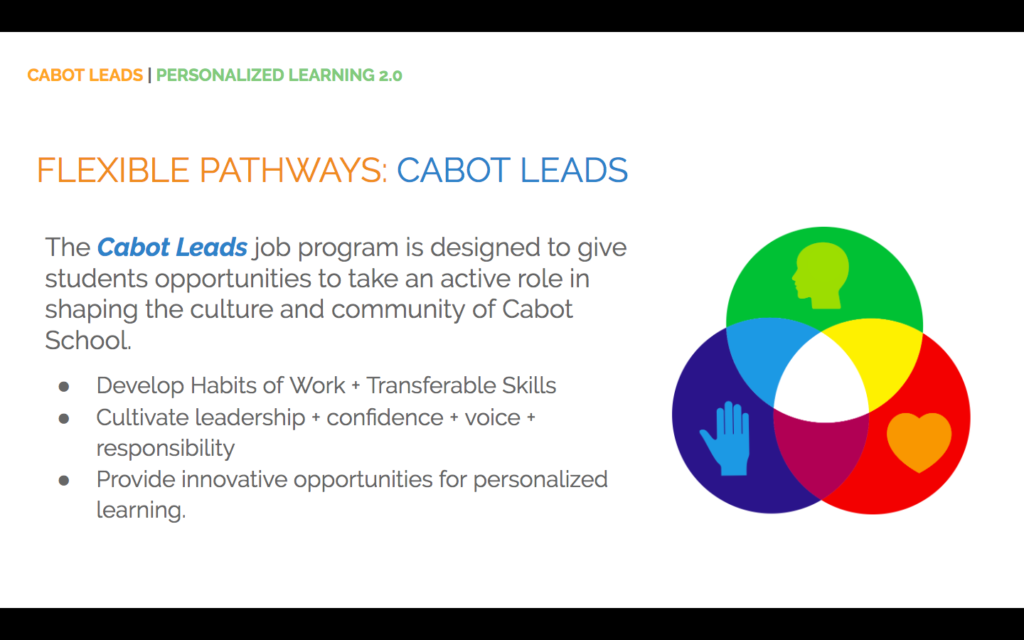
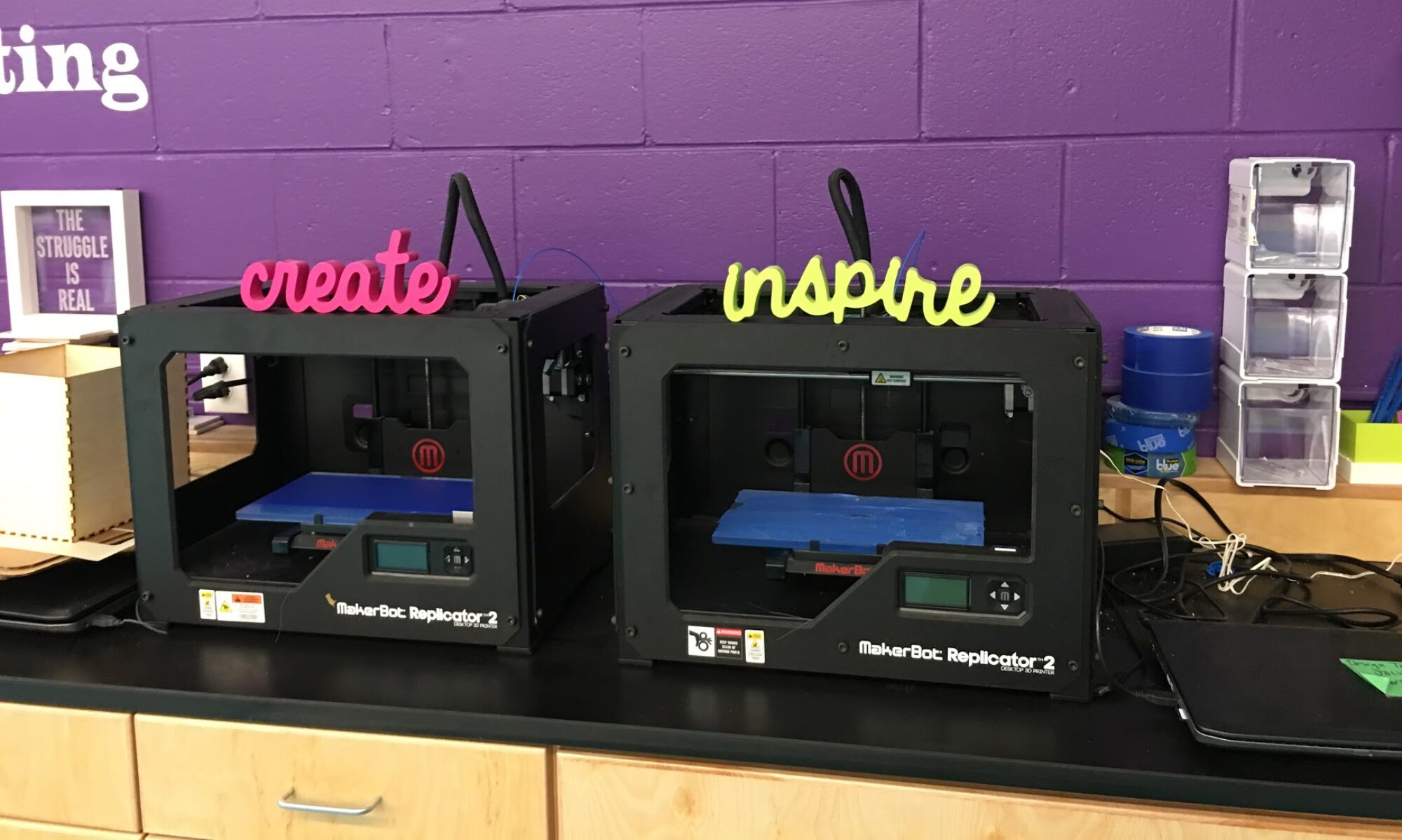

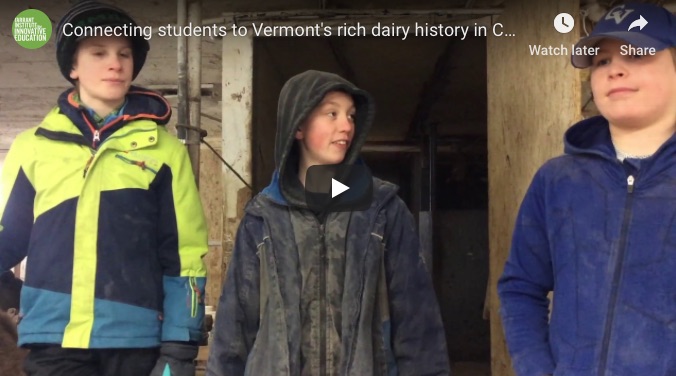

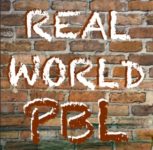
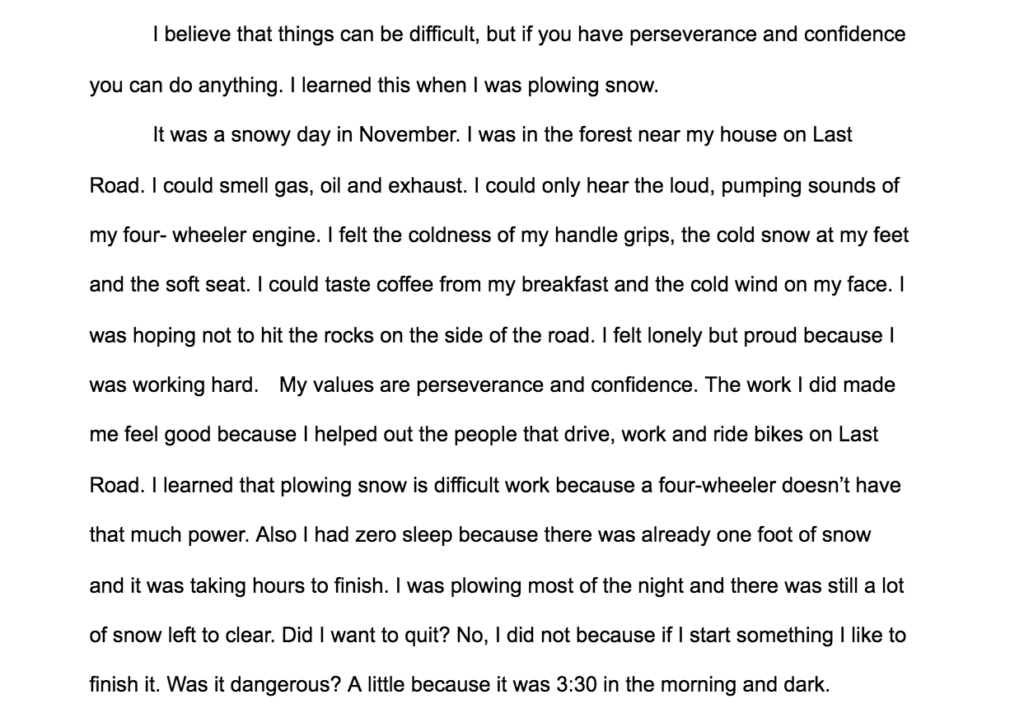
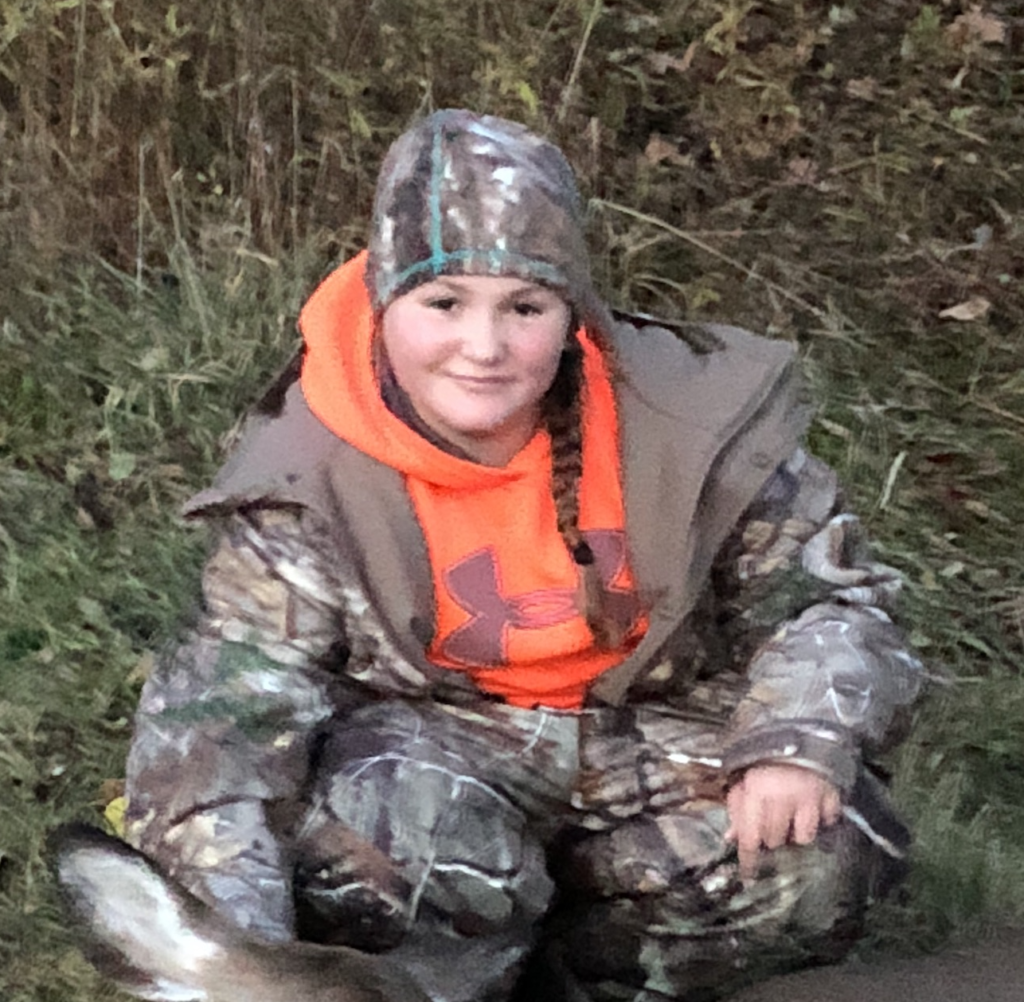
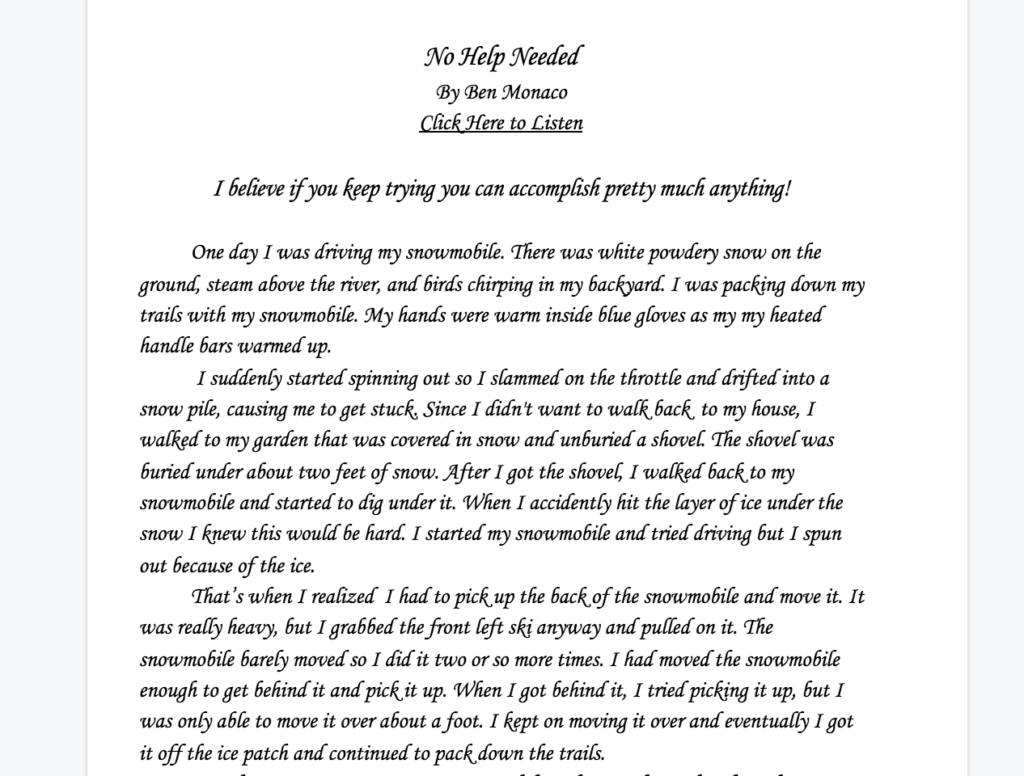
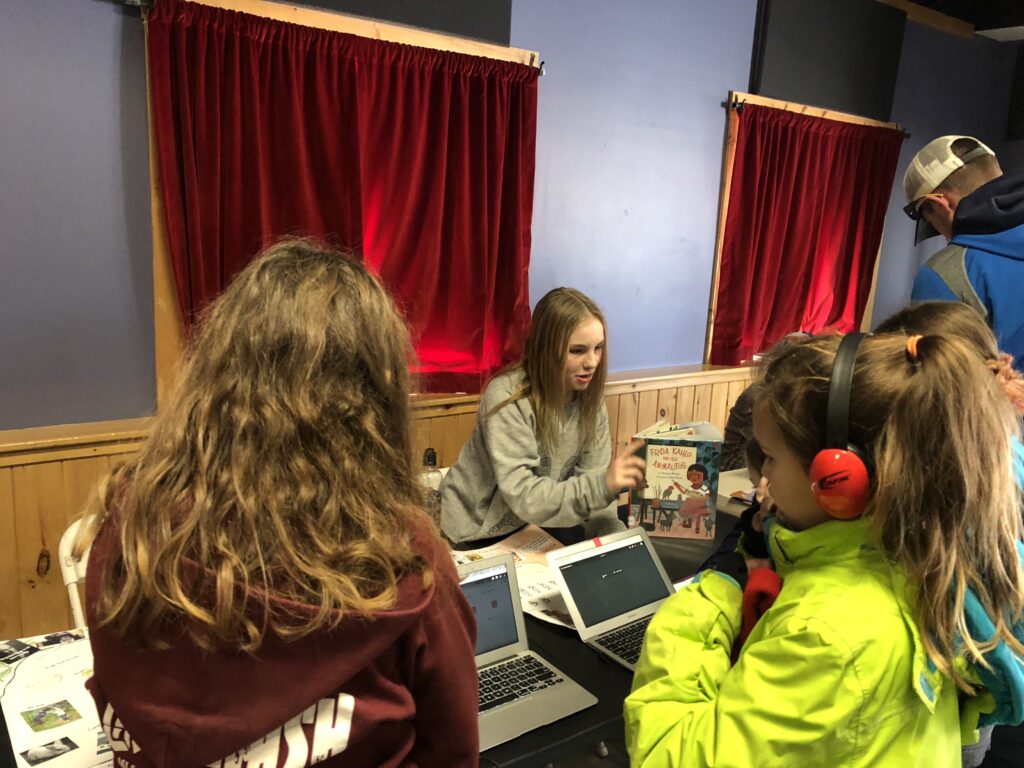









 TED Talks are short, personal powerful storytelling. Now: how can students use this medium as motivation to learn, to explore their purpose, extend their perspectives and understandings, and develop strong storytelling and presentation skills?
TED Talks are short, personal powerful storytelling. Now: how can students use this medium as motivation to learn, to explore their purpose, extend their perspectives and understandings, and develop strong storytelling and presentation skills?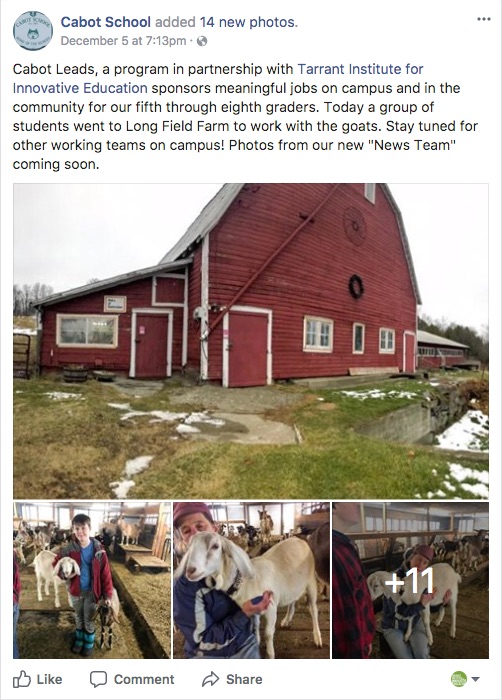
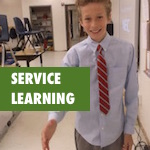
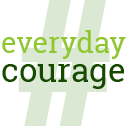 So much of the change we need to see right now can be kicked off by starting conversations with members of your community.
So much of the change we need to see right now can be kicked off by starting conversations with members of your community.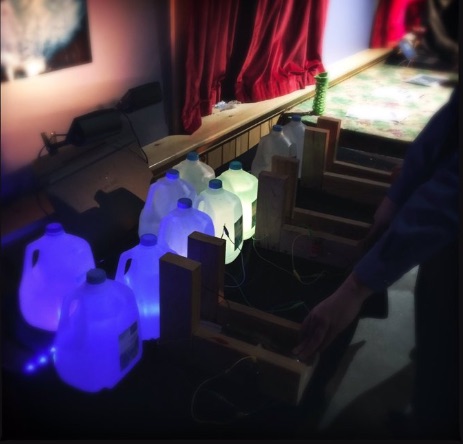
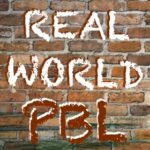
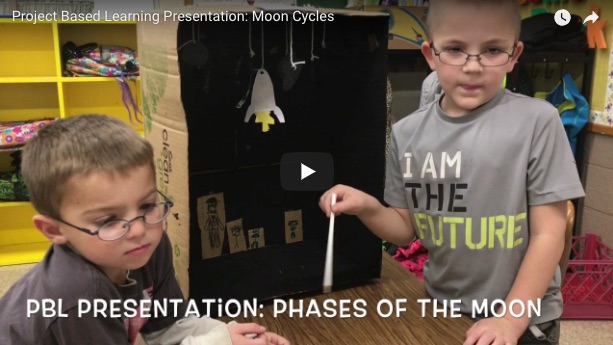
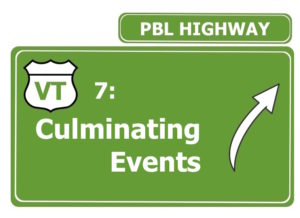 The culminating event! It’s the lovely finish line of a Project-Based learning unit. The big event. You’ve been planning for months for this event that celebrates the projects and the learning in an authentic, community based forum. All along, it’s been a strong motivator for scholars, grounding the relevant work they’ve been doing.
The culminating event! It’s the lovely finish line of a Project-Based learning unit. The big event. You’ve been planning for months for this event that celebrates the projects and the learning in an authentic, community based forum. All along, it’s been a strong motivator for scholars, grounding the relevant work they’ve been doing.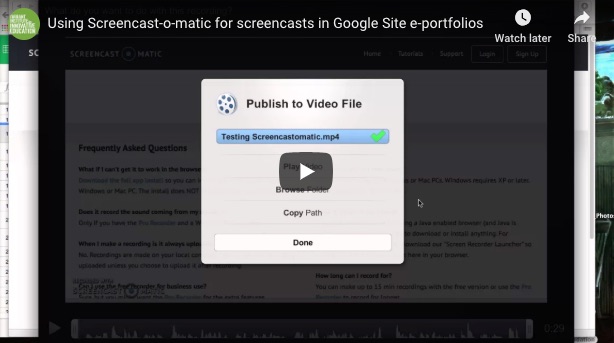
 Many students love working with video. Students can create videos for any subject to show specifically what they’re learning, how they spend their time and to demonstrate proficiency. But it’s not always obvious how you, as an educator, can help students see the connection to specific content areas.
Many students love working with video. Students can create videos for any subject to show specifically what they’re learning, how they spend their time and to demonstrate proficiency. But it’s not always obvious how you, as an educator, can help students see the connection to specific content areas.
 I’m participating in
I’m participating in 